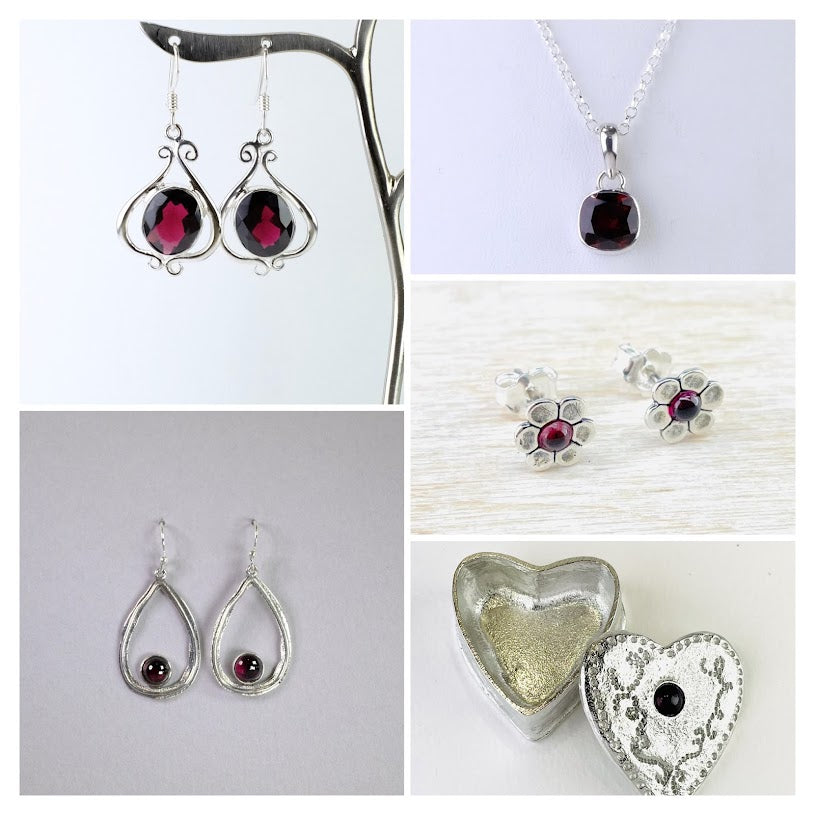
Garnets and Pomegranates.
Posted by: Amanda Dennis -
New Year, new month, new birthstone. It's 2024, January and the birthstone is Garnet.
But what do you know about Garnets? They are undoubtedly beautiful. Generally they are known to be a gorgeous rich deep red, but other colours do exist - ranging from purple to yellow.
The red shade is by far the most popular and it is from this colour that their name comes. It is believed to originate from the medieval latin 'granatus' which means pomegranate - don't they look just like the pomegranate seeds you see scattered over trendy salads? But the name is also linked to the Middle English 'gernet', meaning dark red. Maybe we should link the two and have a gernet granatus!!
*

Garnet has a long history as a gem set in jewellery. The pharaohs of ancient egypt wore garnet crusted necklaces, in ancient Rome important documents were secured by wax stamped with garnet set rings and in the Middle Ages both nobility and the clergy favoured garnets. They were also very popular in Victorian times here in the UK.
In modern times the African continent supplies much of the world's garnet, but it is found in many other places such as Myanmar, Brazil, Iran, Afghanistan, Pakistan, India and Sri Lanka.
*

*
So you give the gift of a garnet to a loved one born in January. Other than being a pretty piece of jewellery with an almost edible looking stone, what else does it mean?
If you believe in the power of stones, garnet is amazing!
In ancient and medieval times, garnet was thought to be a remedy for inflammatory diseases and to soothe the angry heart. In the 21st century it is believed to keep the wearer safe in travel, and to bring protection, friendship, trust, commitment and love. Wow!
Gorgeous red garnet is also traditionally given to celebrate both the 2nd and 18th Wedding Anniversaries.
*

*
One delightful stone, so many powers, so many meanings.
Everyone born in January deserves to own one.
